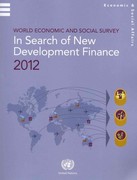fill the blank spaces with neat and clear calculation
QUESTION 5: Growth rates (5 points) In Utopia, GDP grows at the exact same rate every year. In 1990, GDP was at 100, and in 2000 it was at 200. (A) Will Utopia first reach four times the GDP of 2000, or twice the GDP of 20107 Show all your work! (3 points) (B) In what year will GDP for the first time be at least three times as high as it was in 20007 (2 points)QUESTION 4: SPDG model (11 points) Suppose the following equations describe an economy currently at long-run equilibrium: P: = pi+ +z pf = 0.4pi-1 + 0.6pt-1 Po = Po = $0 = 3 Yo = Zo = 0 Recall that z represents supply shocks, x = x - y" and P = 100 In (/yN) [A) Write down the numerical SP and DG equations using the information above. (2 point) (B) Substitute the DG equation into the numerical SP equation and solve for p, as a function of Pt-1. P/-1. Pt-1. 2t and z (1 point)QUESTION 3: Government deficits (9 points) Consider an economy described as follows: C = Ca + c(Y - T) = 200 + 0.5(Y-T) T = Ta +t*Y = 100 + 0.2Y NX = NX. - nx*Y = 150 - 0.2Y Ip = 300, G = 400. [A) Assume that the economy as described above is at natural GDP. What is the value of the structural government deficit/surplus? Hint: you have to find Y. (4 points) [B) Suppose that I, temporarily falls to 200 and we are no longer at natural GDP. What is the value of the actual deficit? (3 points) (C) Suppose that monetary policy could somehow be used to bring Ap back to the initial value (for instance because Ca and Ip depend on the interest rate). What is the new value of actual deficit? Hint: this exercise does not require any calculations. (2 points)(D) After the central bank's intervention of (C), the government thinks that (as a result of this intervention) NX is too low. In order to increase NX, the government reduces spending by 10 to 74. Find the equilibrium values of Y, e and NX after this reduction in G (assuming that MS/P is still at 56). Hint: You know one of the variables right away. Again, keep in mind that this is a small open economy with flexible exchange rates and perfect capital mobility. (5 points)QUESTION 2: Open IS-LM (16 points) Let the following represent the structure of a SMALL OPEN ECONOMY with PERFECT CAPITAL MOBILITY and FLEXIBLE EXCHANGE RATES: C = Ca+ 0.6(Y-T) Ca = 80, T = 60, G=84, Ip = 70 - 10r, NX = 100 - 0.1Y - 24e, (M/P)D = 0.2Y-4r, MS/P = 60. A) Assume that initially foreign and domestic interest rates be equal so that r = r and let the foreign exchange rate e equal 2. Find the IS and LM equations. (4 points] (B) Find the equilibrium income, interest rate and net exports. (2 points] (C) The central bank thinks that Y is too high and reduces real money supply from 60 to 56 in order to reduce GDP. Find the new equilibrium values of Y, e and NX. Hint: you can find Y just using the new LM curve. Don't forget that this is a small open economy with flexible exchange rates and perfect capital mobility. (5 points)(D) In which of the countries is consumption-per-capita higher in the steady-state? (4 points) (E) In which of the countries is the marginal product of labor higher in the steady-state? Hint: The MPL is the derivative of the production function with respect to labor. You can relate this to your findings in (B). (4 points)QUESTION 1: Growth theory (20 points) Consider two countries: Frugalia and Prodigalia (we will call them F and P). In both countries the production function is Cobb-Douglas: Y = AK /3N2/3. The population growth rate is 0.1, physical capital depreciates at the rate of 0.1, and A=1. In F the savings rate is SF = 0.2 and in P it is sp = 0.4. (A) Write the production function in terms of output per capita (Y/N). (2 points) (B) Find the steady-state values of the capital-labor ratio (K/N) in both countries. (6 points) (C) Find the steady-state values of the output per capita (Y/N) in both countries. (4 points)













